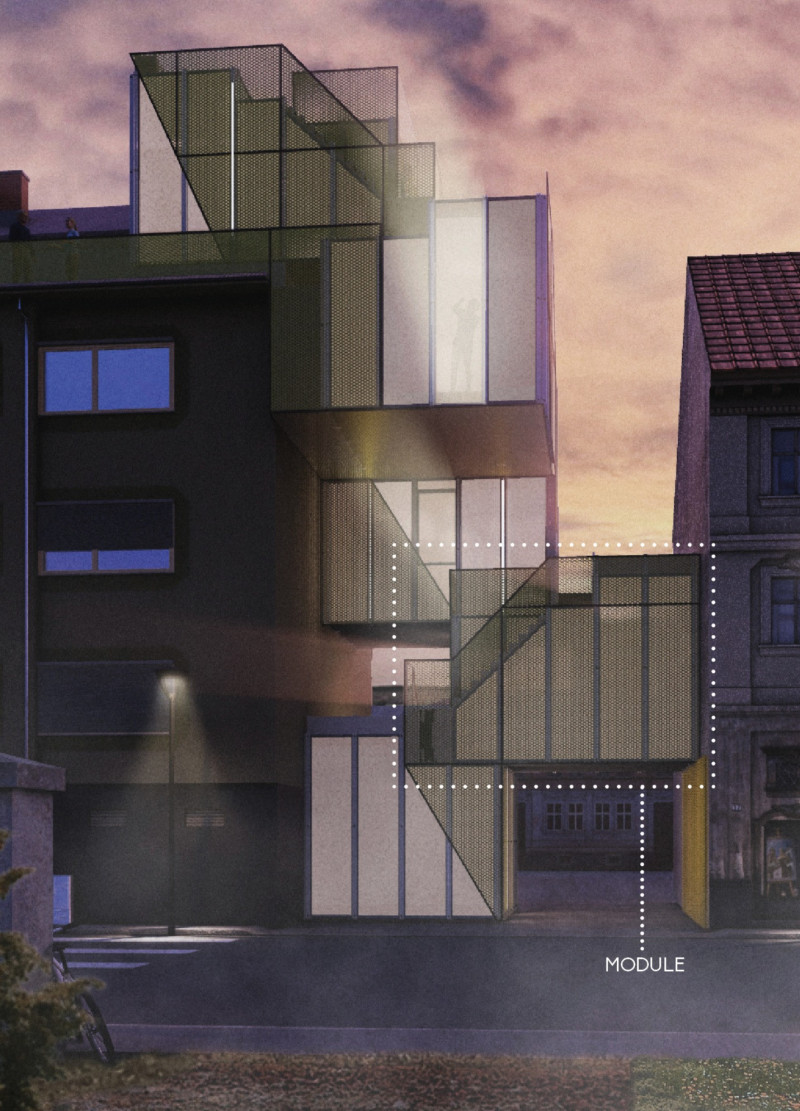5 key facts about this project
Unique Modular Design Approach
The defining characteristic of Tiny Parasite is its modular construction method. Each unit is designed to operate independently while maintaining connectivity with surrounding structures. The modularity allows residents to customize their living spaces based on individual needs ranging from sleeping quarters to workspaces. This flexible design is particularly relevant in today’s urban environments, where the function of living spaces is continuously evolving. By utilizing a 0.97-meter grid system, Tiny Parasite ensures optimal space utilization, allowing for efficient arrangement and orientation of units.
The project incorporates a variety of sustainable materials, including steel for structural support, wood for aesthetic warmth, and glass panels for abundant natural light. Photovoltaic panels on the roof reinforce the project’s commitment to eco-friendliness, aligning with modern sustainability goals. These design elements not only enhance the functionality of the living spaces but also contribute to a lower environmental impact over the life cycle of the buildings.
Enhanced Community Interaction
Tiny Parasite integrates community-focused design elements that encourage social interaction among residents. Features such as communal rooftop gardens and shared outdoor spaces serve to foster a sense of community and provide opportunities for residents to engage with one another. The thoughtful inclusion of such spaces reflects an understanding of contemporary urban behavior, where social interaction often occurs in common areas rather than private homes. Moreover, the design promotes efficient ventilation and air quality management through modern exhaust and air supply systems.
In summary, Tiny Parasite is an innovative architectural project that effectively addresses modern urban housing challenges through its modular design and sustainable practices. For those interested in exploring this project further, detailed architectural plans, sections, and designs are available to provide deeper insights into its concepts and functional approaches.























